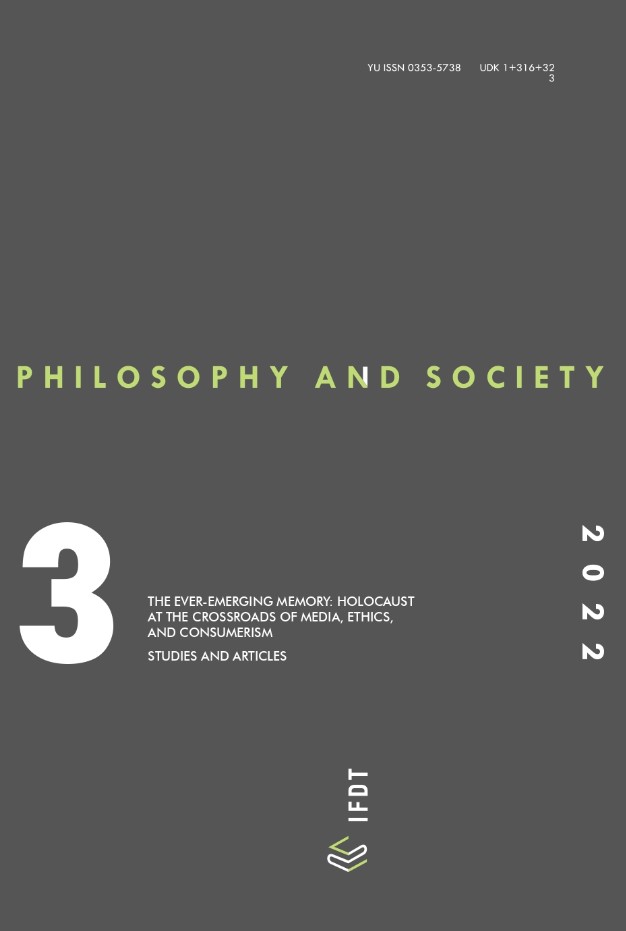Testimony in Stone: Architecture of War from Kluge to Herscher and Weizman
Testimony in Stone: Architecture of War from Kluge to Herscher and Weizman
Author(s): Marija RatkovićSubject(s): Architecture, History of the Holocaust, Film / Cinema / Cinematography
Published by: Institut za filozofiju i društvenu teoriju
Keywords: architecture; war; film; Holocaust studies; warchitecture; forensic architecture; performative; cultural memory; Alexander Kluge
Summary/Abstract: The article contributes to creating an outline of the significant postwar theoretical approaches that examine the role, purpose, and significance of architecture in war and war crimes. Starting from the Clausewitz thesis that “war is not autonomous”, this paper attempts to reveal “the blood that has dried in the codes” (Foucault), politics hidden behind the four walls of architecture. From the concepts of Brutality in Stone (Kluge), Warchitecture (Herscher) or Forensic Architecture (Weizman), through the lenses of architecture, the article exposes war, politics, and ideologies that shape and drive architecture by reimagining and repurposing it both in its primary, functional and cultural, representative sense. A shift from “the era of the witness” (Felman) to the decade of evidence (Weizman) promotes architecture and its remains to the level of science, global governing, and law. The connection of timely-distanced emancipatory practices influenced by Holocaust studies establishes a discursive field for architecture as a performative rather than representative practice. The theoretical frame of the postwar landscape as second nature (Adorno) is crucial for discussing the role of architecture in the Holocaust. Furthermore, it stresses the work of Herscher and Weizman as a contribution to the critique of the depoliticized processes of resolution of the contemporary war crimes and post-conflict reconciliation. Architecture as a societal practice could potentially have a central position in memory and knowledge production, as well as the production of a counter-public sphere.
Journal: Filozofija i društvo
- Issue Year: 33/2022
- Issue No: 3
- Page Range: 535-550
- Page Count: 16
- Language: English

